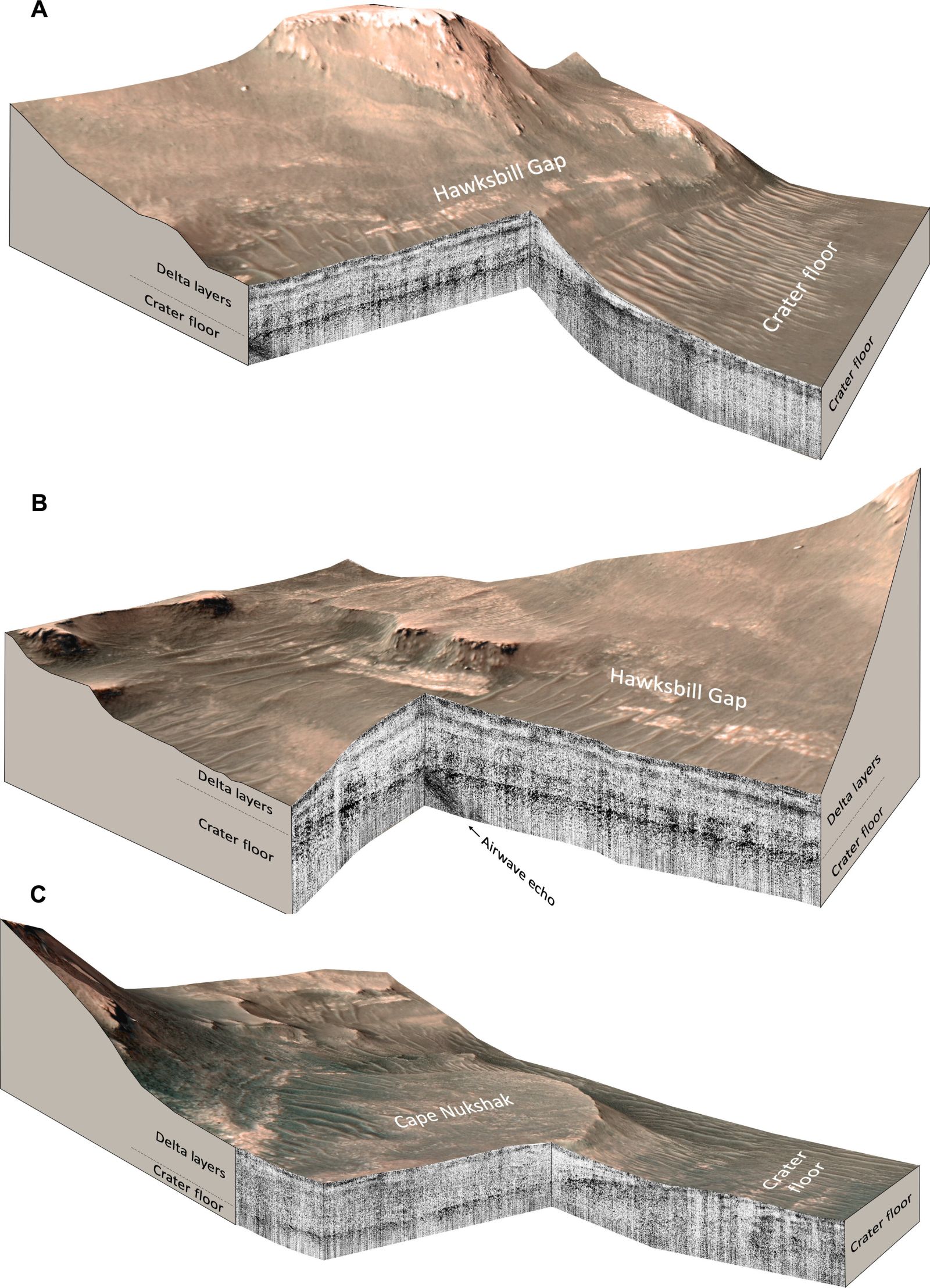NASA: Is the Perseverance Rover Feet Away From Traces of Life on Mars?
Follow us on Google News (click on ☆)
By using ground-penetrating radar, the rover detected layers of sediment, evidence of an ancient lake that dried up to form a gigantic delta. This discovery strengthens the hope of finding proof of ancient life on Mars, a hypothesis long conjectured but never confirmed.

3D views projected in cross-section of the RIMFAX reflection amplitude radargrams.
( A ) Hawksbill Gap acquired on Sols 535 to 541 and ( B ) Hawksbill Gap on Sols 449 to 460 and Sols 535 to 537.
( C ) Cape Nukshak on Sols 420 to 421 and Sols 556 to 632.
The highly reflective layers are shown as dark while the weakly reflective layers are shown light. All views use the data from the HiRISE digital elevation model and are exaggerated by a factor of two vertically.
Arriving at the crater in February 2021, Perseverance has conducted thorough analyses, particularly with the RIMFAX (Radar Imager for Mars' Subsurface Experiment) instrument. This technology has allowed mapping of underground structures up to about 66 feet (20 meters) deep, revealing the existence of sediments carried by an ancient river.
David Paige, a professor of planetary science and the lead author of the study, emphasizes the significance of these results for understanding environmental changes on Mars. The sediments, previously suspected but never confirmed, indicate a rich geological history, marked by two distinct phases of erosion.
Perseverance, a key player in NASA's Mars 2020 mission valued at $2.7 billion, was accompanied for three years by the Ingenuity helicopter. Besides RIMFAX, the rover is equipped with six other scientific instruments, contributing to multidimensional research on the Red Planet.
The existence of water on Mars, crucial for life as we know it on Earth, suggests the possibility of a Mars once habitable. However, the search for traces of life remains complex and uncertain.
To bring back samples collected by Perseverance, NASA plans a collaboration with the European Space Agency (ESA). The samples will be retrieved by an ESA lander, then sent to Earth, with a return expected no earlier than 2033.
This mission raises fundamental questions about the history of Mars and the potential existence of life beyond Earth, keeping both the scientific community and the general public on edge.